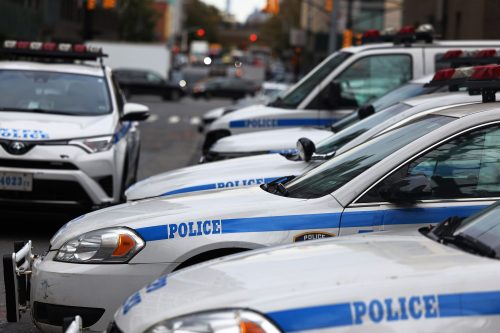

By Praniti Gulyani
NEW YORK, NY— Black and Hispanic residents were the subject of higher rates of criminal summons enforcement, and the “over-enforcement of low-level offenses” did not lead to public safety but did decrease “trust in the NYPD within these communities,” according to a study here.
In 2021, the New York City Mayor’s Office of Criminal Justice (MCOJ) collaborated with several researchers at the John Jay College of Criminal Justice to facilitate research related to six of the 132 reform initiatives contained within the New York City Police Reform and Reinvention Collaborative Plan, also referred to as “the Plan.”
Using data from 2013-2022, as provided by the Office of Court Administration (OCA), the Data Collaborative for Justice (DCJ) at the John Jay College of Criminal Justice examined trends in both summons issuance and court outcomes.
Data Collaborative of Justice (DCJ) said in a statement this month the study noted a considerable increase in criminal summonses in 2022.
To support this claim, the statistics recorded how criminal summonses decreased rapidly by over 90 percent from 2013 to 2021 (375,707 to 22,603). Thereafter, for the first time in a decade—they increased by 62 percent from 2021 to 2022 (to 36,221). This upward trend continued with an escalation of more than 80 percent from 2022 to 2023.
DCJ said there was a notable fluctuation in charge composition. In 2020, marijuana possession accounted for 29 percent of criminal summonses. However, in 2021, this number dropped to 15 percent and post legalization in 2022, there were zero criminal summonses for marijuana possession.
However, on the flip side, added DCJ, possessing an open container of alcohol in public accounted for seven percent of summonses in 2020. This number increased to nine percent in 2021, but in 2022 it jumped to 24 percent.
Another significant disparity of criminal summons issuance was observed in the Bronx, DCJ said, noting that in each year from 2020-2022, the New York Police Department (NYPD) issued over 30 percent of criminal summonses in the Bronx. This was disproportionate because Bronx residents comprised only 17 percent of the city’s population.
Moreover, widening racial disparities with respect to criminal summonses issuance were also observed. As per DCJ, even though Black and Hispanic people combine for just 52 percent of the city’s population, they were issued 85 percent of criminal summonses by the New York Police Department (NYPD).
And, in relation to their population numbers, the police issued summonses at a rate 11.5 times higher in 2022 for Black people as compared to white people. A similar disparity was observed with respect to Hispanic people as compared to white people, with the rate of criminal summonses issuance for Hispanic people coming forth as 6.8 times higher.
As noted in a press statement by DCJ, these statistics are a considerable increase from 2020 where the rate of criminal summons issuance was 8.9 times higher for Black people and 4.5 times higher for Hispanic people as compared to white people.
Another noteworthy outcome of this study conducted by DCJ involves an intersection of Racial and Neighborhood Disparities. Out of all the 178 zip codes across New York City, residents of 40 (22 percent) of the City’s 178 zip codes accounted for over half of criminal summonses issued in 2022, with 34 of these 40 zip codes majority or plurality Black or Hispanic.
The press release indicates how 89 percent of these zip codes had a larger proportion of summonses issued to Black residents, while 67 percent had a larger proportion issued to Hispanic residents. These statistics are quoted in relation to the respective shares of the given zip code’s general population.
Finally, the press statement by DCJ adds, “For a number of different reasons, summonses are rarely resolved with a meaningful outcome in the criminal courts.” This is why the “process has been labeled as a punishment,” said DCJ.
For example, in 2022, the court deemed 16 percent of the summonses as “defective” for various reasons—ranging from delay in submission by the police to the incorrect listing of a court date on a weekend or holiday, said DCJ
Also, out of the remaining summonses that the court was able to adjudicate— only nine percent ended in a conviction. While 63 percent of these cases received a direct dismissal, 28 percent received an adjournment in contemplation of dismissal (ACD). After a couple of months, most ACDs result in a clerical (automatic) dismissal—except in very rare cases when a prosecutor chooses to revisit a case.
DCJ said that “less than one out of 10 cases are disposed as guilty.” Thus, summonses result in a “process is punishment” effect, as opposed to “formal accountability.” The “process is punishment” effect involves multidimensional loss—ranging from loss of time, income, and other related challenges from “appearing in court or experiencing contact with law enforcement.”
Michael Rempel, director of the Data Collaborative for Justice, charged, “The recent rise in criminal summonses, coupled with considerable disparities based on race and neighborhood, run expressly counter to important goals of the City’s 2021 police reform plan.”
Rempen goes on to question the value of expending time and resources on the issuance of criminal summonses, stating “less than 10 percent of people who receive these summonses are actually convicted.”
Commenting on the results of this study conducted by the DCJ, Anna Stenkamp, senior research associate at the Data Collaborative for Justice, states, “Regardless of whether the summons recipient’s neighborhood had a high or low median household income, or the demographic makeup of the neighborhood, Black and Hispanic residents were the subject of higher rates of criminal summons enforcement.
“This over-enforcement of low-level offenses through the use of criminal summonses does not lead to public safety but increases the likelihood of negative police contact and decreases trust in the NYPD within these communities.”




